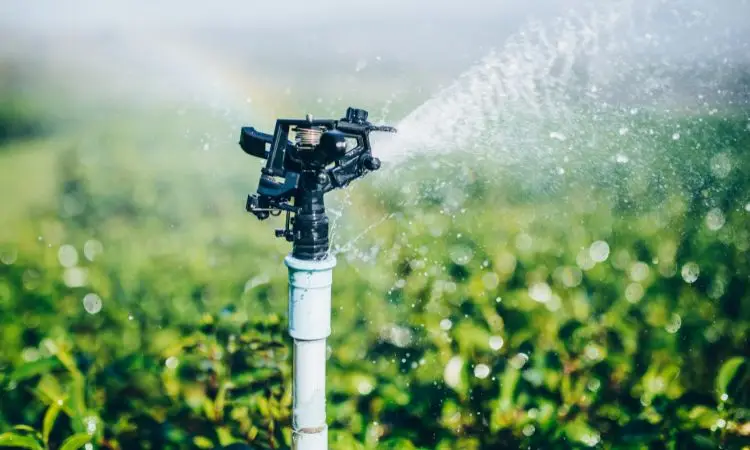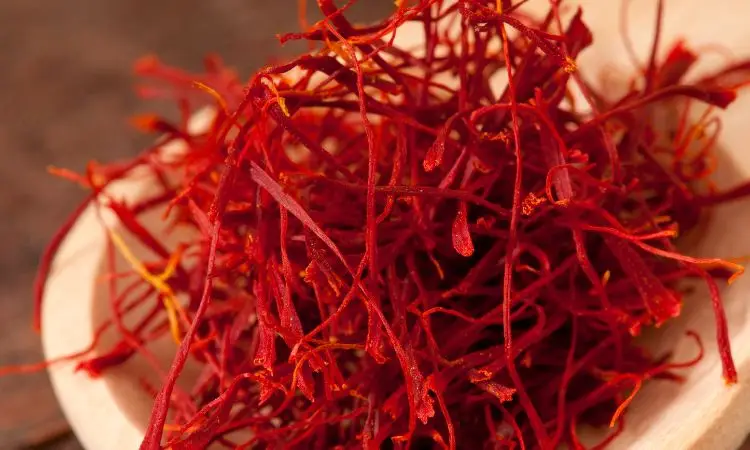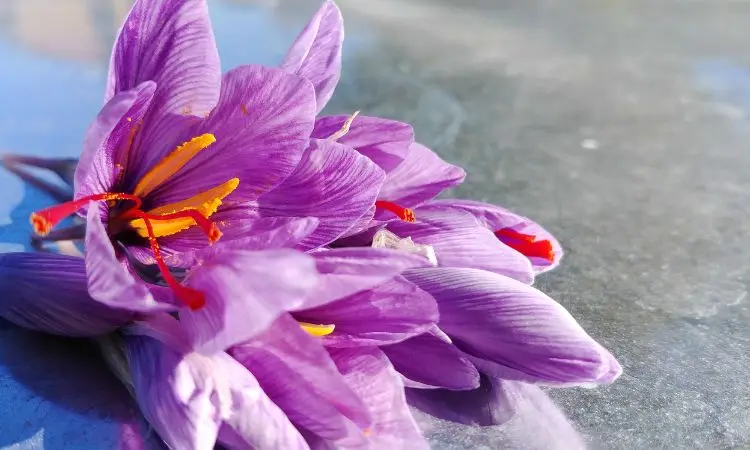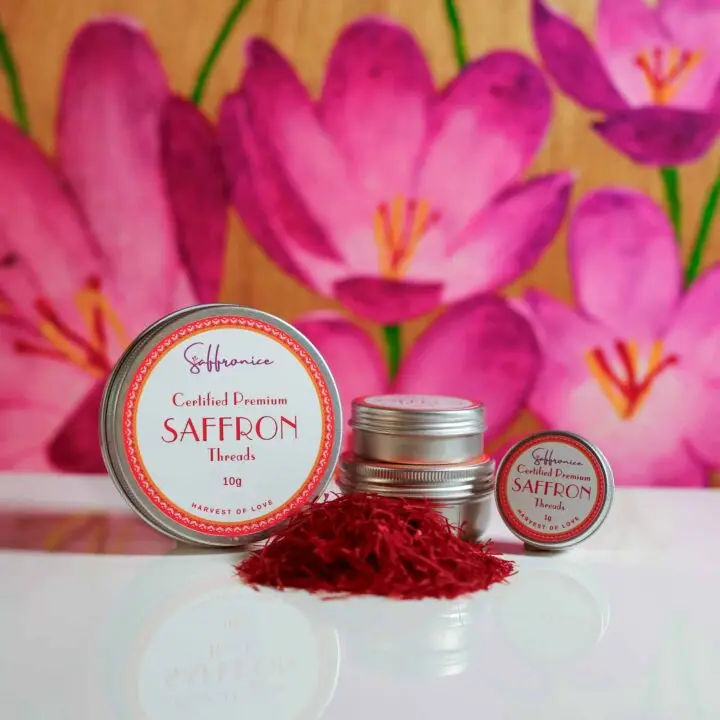📌 Quick Answer: Saffron requires varied watering throughout its growth cycle—minimal water during dormancy (summer), moderate irrigation during active growth (fall), and precise watering during flowering (October-November). The crop needs well-drained soil with consistent moisture but never waterlogging. Most successful growers use drip irrigation systems, which deliver 300-400mm of water annually, concentrated during the active growing season.
Key Takeaways on Saffron Irrigation Needs
- Water requirements vary dramatically throughout saffron’s growth cycle
- Climate conditions determine irrigation frequency and volume
- Morning watering prevents fungal diseases and optimizes absorption
- Soil moisture monitoring is essential for avoiding over-/underwatering
- Modern drip irrigation systems improve efficiency by 40-50%
- Proper drainage is as important as proper watering
- Water quality significantly impacts saffron quality and yield
- Seasonal adjustments maximize flower production and quality

Understanding Saffron’s Water Requirements Throughout Growth Cycles
Mastering saffron cultivation requires understanding that this unique crop follows a reverse growing pattern compared to most plants. Saffron’s water needs change dramatically across its three distinct phases, and miscalculating these requirements represents one of the most common challenges in growing saffron.
Chef’s Professional Tip: In my years working with saffron in professional kitchens, I’ve learned that irrigation directly affects the spice’s flavor intensity. Over-irrigated saffron produces larger but less aromatic threads. The best saffron comes from plants that experienced slight water stress during flowering—it concentrates the essential oils.
Dormancy Period Water Needs (May-August)
During dormancy, saffron corms rest underground while temperatures soar. This period requires the most restraint from growers. The soil should remain mostly dry, receiving only occasional light watering to prevent complete desiccation.
Water Requirements:
- Frequency: Once every 3-4 weeks maximum
- Volume: 10-15mm per watering event
- Goal: Maintain soil moisture at 10-15% to prevent corm dehydration
- Critical rule: Never saturate soil during dormancy
Excessive watering during dormancy is disastrous, leading to corm rot, fungal infections, and complete crop loss. Many new growers make this fatal mistake, treating dormant saffron like actively growing plants.
Food Scientist’s Note: During dormancy, the corm’s metabolic rate drops significantly. Water uptake capacity decreases by 80-90% compared to active growth. Overwatering creates anaerobic conditions that promote pathogenic bacteria and fungi, particularly Fusarium and Rhizoctonia species that devastate saffron crops.
Active Growing Season Requirements (September-October)
As temperatures cool, saffron emerges from dormancy with vigorous leaf growth. This phase demands consistent moisture to support foliage development and prepare corms for flowering.
Optimal Irrigation Schedule:
- Frequency: Every 3-5 days
- Volume: 20-30mm per irrigation event
- Total monthly requirement: 150-200mm
- Soil moisture target: 60-70% of field capacity
The active growing season establishes the foundation for flowering. Inadequate water during this critical period results in stunted foliage, reduced flower counts, and diminished saffron quality.
Flowering Stage Irrigation Specifics (October-November)
The flowering stage represents the most critical and delicate irrigation period. Saffron’s precious crimson stigmas require precise water management to achieve optimal quality and yield.
Flowering Water Management:
- Frequency: Every 2-3 days
- Volume: 15-20mm per event
- Timing: Early morning only
- Consistency: Absolutely critical—no missed irrigations
During flowering, maintain consistent soil moisture without waterlogging. Even a single day of water stress can abort developing flowers or reduce stigma size. Conversely, overwatering dilutes the essential compounds (crocin, picrocrocin, and safranal) that give saffron its value, color, and aroma.
Climate Considerations for Saffron Irrigation
Understanding saffron farming climate requirements helps growers adapt irrigation strategies to their specific regions. Saffron naturally thrives in Mediterranean climates, but successful cultivation occurs worldwide with proper water management adjustments.
Arid and Semi-Arid Regions
In dry climates with annual rainfall below 300mm, saffron irrigation becomes absolutely critical. These regions offer advantages—low humidity reduces fungal disease pressure—but require sophisticated water management.
Irrigation Adaptations:
- Install drip irrigation with pressure compensation.
- Increase irrigation frequency during active growth
- Add 20-30% more water than standard recommendations
- Implement windbreaks to reduce evapotranspiration
- Use mulching extensively to conserve soil moisture
Growers in arid regions like Iran, Afghanistan, and parts of Spain have perfected water-efficient techniques that maintain excellent saffron quality while conserving this precious resource.
Temperate Climates
Temperate regions with moderate rainfall (400-800mm annually) present different challenges. Natural precipitation can supplement irrigation but requires careful monitoring to prevent waterlogging.
Temperate Climate Strategy:
- Prioritize excellent drainage over frequent irrigation
- Reduce irrigation when rainfall exceeds 20mm per week
- Monitor soil moisture constantly to prevent saturation
- Plant in raised beds to improve drainage
- Time irrigation to fill gaps between rain events
High Rainfall Areas
Growing saffron in regions with heavy rainfall (>800mm annually) demands exceptional drainage management. In these areas, the challenge shifts from providing enough water to preventing too much.
High Rainfall Solutions:
- Mandatory raised beds (20-30cm elevation)
- Install subsurface drainage tiles
- Reduce or eliminate irrigation during rainy periods
- Cover crops during dormancy to shed excess water
- Select sloped fields for natural water runoff
Best Practices for Saffron Irrigation
Implementing proven irrigation techniques separates successful saffron farming operations from struggling ones. These best practices optimize water use while maximizing crop performance.
Morning vs Evening Watering
Timing irrigation affects plant health, disease pressure, and water efficiency. For saffron, morning watering proves superior for multiple reasons.
Morning Watering Advantages:
- Foliage dries quickly, reducing fungal disease risk
- Plants utilize water efficiently during daylight photosynthesis
- Lower evaporation rates in cooler morning temperatures
- Allows the soil surface to dry before evening humidity rises
Why Avoid Evening Watering:
- Wet foliage overnight invites fungal pathogens
- Cooler nighttime temperatures reduce water absorption
- Higher humidity increases disease pressure
- Water pools on the soil surface during cool nights
Optimal irrigation window: 6:00-9:00 AM provides the best results across all climates.
Soil Moisture Monitoring Techniques
Guessing soil moisture leads to irrigation mistakes. Professional growers rely on objective monitoring methods.
Effective Monitoring Tools:
Tensiometers: Measure soil water tension (recommended: 30-40 centibars for saffron)
Soil Moisture Sensors: Electronic devices providing real-time moisture data at root depth
Feel and Appearance Method: Experienced growers assess soil by hand—saffron soil should feel slightly damp but never muddy.
Visual Plant Indicators: Leaf color and turgidity reveal hydration status before serious stress occurs
Install monitoring equipment at 10-15cm depth—the primary root zone for saffron. Check readings before each scheduled irrigation and adjust accordingly.
Water Quality Parameters
Water quality dramatically impacts saffron health and the final product’s characteristics. Using poor-quality water can sabotage even perfect irrigation timing and volume.
Critical Water Quality Factors:
pH Level: 6.0-8.0 optimal; outside this range causes nutrient lockout
Electrical Conductivity (EC): Below 2.0 dS/m; higher salinity stunts growth and reduces yields
Sodium Content: Low sodium essential; high levels cause soil structure degradation
Chlorine: Municipal water with chlorine >2 ppm should be aerated before use
Hardness: Moderate hardness is acceptable; very hard water may require treatment
For organic saffron farming, water testing becomes even more critical since organic certification restricts treatment options. Poor water quality can differentiate between premium and regular saffron in the marketplace.
Food Scientist’s Note: Water pH affects the bioavailability of essential nutrients, particularly phosphorus and micronutrients like iron and manganese. Saffron requires these elements for synthesizing the carotenoid compounds that create its characteristic color and commercial value.
Modern Irrigation Systems for Saffron Cultivation
Technology has revolutionized saffron water management. Modern systems from specialized saffron farm equipment suppliers offer precision that traditional methods cannot match.
Drip Irrigation Systems
Drip irrigation represents the gold standard for saffron cultivation, delivering water directly to the root zone with minimal waste.
System Components:
- Main supply line (16-25mm diameter)
- Sub-main lines distributing to field sections
- Lateral drip lines (12-16mm) with emitters spaced 20-30cm
- Pressure regulators maintaining 1.0-1.5 bar
- Filters preventing emitter clogging
- Optional fertigation system for nutrient delivery
Drip Irrigation Advantages:
- 40-50% water savings compared to flood irrigation
- Uniform water distribution across the entire field
- Reduced weed growth between rows
- Lower disease pressure from dry foliage
- Ability to integrate fertilizers precisely
- Automation compatibility for labor savings
Installation Considerations: Position drip lines 5-10cm from saffron rows. For standard 20cm row spacing, use inline drip tape with 20cm emitter spacing delivering 1-2 liters per hour per emitter.
Sprinkler Irrigation
While less common than drip systems, sprinkler irrigation suits certain saffron operations, particularly during establishment or in fields with irregular topography.
Sprinkler System Types:
Overhead Sprinklers: Cover large areas efficiently, but wet foliage (increasing disease risk)
Micro-Sprinklers: Lower-volume systems creating fine droplets with reduced foliage wetting
Rotary Sprinklers: Adjustable radius coverage for irregular field shapes
Sprinkler Limitations for Saffron:
- Wet foliage increases fungal disease risk
- Less water efficiency (20-30% losses to evaporation)
- Uneven distribution in windy conditions
- Cannot integrate fertigation as effectively
Growers using sprinklers should irrigate exclusively in the early morning, allowing rapid foliage drying. Avoid sprinkler irrigation during flowering when wet blooms can damage delicate stigmas.
Automation and Smart Controllers
Modern irrigation controllers optimize water use by integrating weather data, soil sensors, and plant requirements.
Smart Controller Features:
- Weather-based scheduling adjusting for rainfall and temperature
- Soil moisture sensor integration prevents overwatering
- Remote smartphone control and monitoring
- Automatic shutoff during rain events
- Zone-based programming for field variations
- Usage tracking and efficiency reporting
These systems reduce water consumption by 20-35% while improving crop outcomes. The technology particularly benefits sustainable saffron farming operations focused on resource conservation.
Signs of Improper Watering in Saffron Plants
Early detection of irrigation problems prevents serious crop damage. Learn to recognize these telltale symptoms.
Overwatering Symptoms
Excess water creates anaerobic soil conditions and promotes root diseases—both devastating for saffron.
Visual Indicators:
- Yellowing leaves (chlorosis) despite adequate nutrients
- Wilting even when the soil is wet
- Stunted growth and reduced vigor
- Brown, mushy roots upon inspection
- Fungal growth on the soil surface
- Foul odor from soil (anaerobic decomposition)
- Reduced flower production
- Small, pale stigmas with a weak aroma
Corrective Actions:
- Immediately reduce irrigation frequency and volume
- Improve field drainage
- Increase time between waterings
- Consider raised beds for chronic problems
- Test and treat for root rot diseases
Underwatering Indicators
Water stress reduces saffron yield and quality, though plants tolerate brief dry periods better than waterlogging.
Drought Stress Signs:
- Leaf tips are turning brown and crispy
- Overall leaf wilting, especially afternoon
- Dull, grayish-green leaf color
- Premature leaf senescence
- Delayed flower emergence
- Reduced flower size and numbers
- Small, thin stigmas
- Corm shrinkage
Response Strategy:
- Gradually increase irrigation (don’t overcompensate suddenly)
- Add mulch to improve moisture retention
- Check the irrigation system for malfunctions
- Verify soil moisture at root depth, not just surface
Root Health Assessment
Healthy roots indicate proper irrigation management. Periodic root inspection provides invaluable feedback.
Healthy Saffron Roots:
- White or light cream colored
- Firm texture
- Fresh, earthy smell
- Abundant feeder roots
- No discoloration or lesions
Unhealthy Root Indicators:
- Brown or black coloration
- Mushy or soft texture
- Foul, rotten odor
- Sparse feeder roots
- Visible lesions or decay
Examine roots by carefully excavating around 2-3 plants per field section monthly during active growth. This monitoring helps perfect irrigation schedules.

Seasonal Adjustments in Saffron Water Management
Successful growers adapt irrigation throughout the year, matching water delivery to saffron’s changing needs and environmental conditions. This dynamic approach, combined with proper harvesting methods, ensures maximum yield and quality.
Summer Management (Dormancy)
June-August Irrigation Strategy:
- Reduce frequency to once every 3-4 weeks
- Apply only 10-15mm per event
- Water early morning to minimize evaporation
- Cease all irrigation if the field maintains 10-15% moisture
- Focus on field maintenance: weed removal, soil aeration
Fall Management (Active Growth & Flowering)
September-November Irrigation Strategy:
- Begin increasing water as temperatures drop
- Establish a consistent schedule: every 3-5 days initially
- Increase to every 2-3 days during flowering
- Monitor weather forecasts; adjust for rainfall
- Maintain continuous moisture without waterlogging
- Peak water application: 150-200mm monthly
Winter Management (Post-Harvest)
December-February Irrigation Strategy:
- Gradually reduce watering as growth slows
- Maintain minimal moisture (20-30% field capacity)
- Irrigate every 7-10 days
- Reduce volume to 15-20mm per event
- Allow soil to dry between waterings
Spring Management (Pre-Dormancy)
March-May Irrigation Strategy:
- Continue reducing irrigation frequency
- Transition toward dormancy dryness
- Final irrigation in late April/early May
- Allow the soil to dry completely by early June
- Prepare the irrigation system for summer shutdown
Chef’s Professional Tip: The two weeks immediately before flowering critically impact saffron quality. Maintaining perfect moisture during this window—neither too wet nor too dry—produces the most aromatic, deeply colored threads. This is when irrigation precision matters most.
Water Conservation Strategies in Saffron Farming
Implementing water-saving techniques reduces costs and environmental impact while maintaining excellent crop performance—essential for sustainable saffron farming.
Mulching Techniques
Mulching dramatically reduces evaporation while providing additional benefits.
Effective Mulch Materials:
- Straw (wheat or barley): 5-7cm layer, excellent moisture retention
- Wood chips: Long-lasting, improves soil structure over time
- Compost: Adds nutrients while conserving water
- Landscape fabric: Prevents weeds, conserves moisture
Mulching Benefits:
- 30-40% reduction in irrigation requirements
- Suppressed weed competition for water
- Moderated soil temperatures
- Improved soil structure as organic mulches decompose
- Reduced erosion during heavy rains
Apply mulch after fall planting, maintaining a 2-3cm clear zone around emerging shoots to prevent rot.
Moisture Retention Methods
Beyond mulching, several techniques improve soil water-holding capacity.
Soil Amendments:
- Organic matter: Increases water retention by 20-30%
- Compost integration: Improves soil structure and moisture capacity
- Water-retaining polymers: Hold up to 400x their weight in water (use sparingly in saffron)
Field Design:
- Contour planting on slopes reduces runoff
- Windbreaks reduce evapotranspiration by 15-25%
- Raised beds with water retention zones
- Micro-basins around plants capture and hold water
Irrigation Efficiency Improvements
System Optimization:
- Regular maintenance prevents leaks and malfunctions
- Proper pressure regulation maximizes uniformity
- Matched precipitation rates across irrigation zones
- Filter cleaning, maintaining emitter performance
- Sensor-based scheduling eliminates waste
Timing Optimization:
- Early morning irrigation reduces evaporation losses by 40%
- Avoid midday watering (evaporation losses exceed 50%)
- Night irrigation is acceptable, but it increases disease risk
These conservation strategies can reduce water consumption by 40-60% while maintaining or improving yields—critical for long-term saffron farming profitability.
Common Irrigation Mistakes to Avoid
Learning from common errors helps new growers avoid costly mistakes that reduce yields and quality.
Inconsistent Watering Schedule
The Mistake: Irregular irrigation creates stress cycles—alternating between drought and saturation.
The Impact: Reduced flower production, inconsistent stigma quality, increased disease susceptibility
The Solution: Establish and maintain consistent schedules; use automated controllers for reliability
Poor Drainage Management
The Mistake: Focusing only on water delivery while ignoring drainage
The Impact: Waterlogging, root rot, and complete crop loss in severe cases
The Solution: Install proper drainage before planting; use raised beds in heavy soils; test drainage capacity
Ignoring Soil Type
The Mistake: Using identical irrigation schedules across different soil types
The Impact: Overwatering in clay soils, underwatering in sandy soils
The Solution: Adjust irrigation based on soil water-holding capacity; conduct soil analysis before planting
Overhead Watering During Flowering
The Mistake: Using sprinklers that wet flowers during the bloom period
The Impact: Stigma damage, increased disease, reduced quality
The Solution: Switch to drip irrigation or irrigate before flowering begins
Municipal Water Without Testing
The Mistake: Assuming tap water is suitable for saffron
The Impact: Salt accumulation, pH problems, chlorine damage
The Solution: Test water quality annually; treat or find alternative sources if needed
Food Scientist’s Note: One commonly overlooked mistake is applying cold water to active plants. Temperature shock stresses roots and reduces nutrient uptake efficiency. In cold climates, allow irrigation water to warm slightly before application, or irrigate midday when the soil is warmer.
Role of Soil Type in Saffron Irrigation
Soil texture fundamentally determines water-holding capacity and drainage characteristics. Successful growers adapt irrigation strategies to their specific soil type.
Sandy Soil Requirements
Sandy soils drain quickly and hold minimal water—challenging for saffron but manageable with proper techniques.
Sandy Soil Characteristics:
- Low water-holding capacity (0.5-1.0 inches per foot)
- Excellent drainage (too excellent for saffron)
- Rapid nutrient leaching
- Requires frequent irrigation
Sandy Soil Irrigation Strategy:
- Increase irrigation frequency: every 2-3 days during active growth
- Reduce volume per event: 15-20mm maximum
- Add organic matter to improve water retention
- Use drip irrigation exclusively
- Implement heavy mulching (7-10cm layer)
- Consider water-retaining polymer amendments
Clay Soil Adaptations
Clay soils hold water tenaciously but drain poorly—potentially problematic for saffron corms.
Clay Soil Characteristics:
- High water-holding capacity (2-3 inches per foot)
- Poor drainage without proper management
- Compacts easily, restricting root growth
- Requires careful irrigation to prevent waterlogging
Clay Soil Irrigation Strategy:
- Reduce irrigation frequency: every 5-7 days during active growth
- Increase volume per event: 25-35mm
- Mandatory raised beds (20-30cm elevation)
- Install subsurface drainage tiles
- Add sand and organic matter to improve structure
- Allow soil to partially dry between irrigations
Loamy Soil Management
Loamy soils (balanced sand, silt, clay) provide ideal conditions for saffron cultivation.
Loamy Soil Advantages:
- Optimal water-holding capacity (1.5-2.0 inches per foot)
- Excellent drainage with good retention
- Ideal structure for root development
- Easier irrigation management
Loamy Soil Irrigation Strategy:
- Standard irrigation frequency: every 3-5 days during active growth
- Moderate volume per event: 20-25mm
- Minimal soil amendments needed
- Either drip or sprinkler systems work well
- Follow basic seasonal adjustment guidelines
Frequently Asked Questions
How much water does saffron need per season?
Saffron requires approximately 300-400mm of water annually, with 80% delivered during the active growing season (September-November). During dormancy, minimal irrigation (40-60mm total) prevents corm desiccation. During active growth and flowering, expect to provide 200-300mm over 8-10 weeks. Actual requirements vary based on climate, soil type, and rainfall.
Can I grow saffron without irrigation systems?
Small-scale growers can successfully cultivate saffron using manual watering in areas with appropriate rainfall patterns. However, drip irrigation dramatically improves water efficiency, consistency, and results. For plots larger than 100 square meters or in arid climates, irrigation systems become essential for economic viability and consistent quality.
What happens if I overwater saffron during dormancy?
Overwatering dormant saffron causes corm rot, fungal infections, and potential total crop loss. The corms have minimal metabolic activity during dormancy and cannot process excess water. Waterlogged conditions create anaerobic environments, promoting pathogenic organisms. Most experienced growers cease irrigation entirely during dormancy unless extended drought threatens corm desiccation.
Should I adjust irrigation for rainfall?
Absolutely. Always reduce or skip scheduled irrigation when rainfall provides adequate moisture. Install a rain gauge in your saffron field and reduce irrigation by the rainfall amount. If rainfall exceeds 25mm per week during active growth, skip that week’s irrigation entirely. Modern smart controllers automatically adjust schedules based on weather station data.
How do I know if my saffron needs water?
Check soil moisture at 10-15cm depth (root zone). The soil should feel slightly damp but not wet. Visual indicators include leaf color and turgidity—healthy, well-watered saffron has bright green, upright leaves. Wilting, grayish-green foliage, or browning leaf tips indicate water stress. Install soil moisture sensors for objective measurements.
Does water quality affect saffron quality?
Water quality significantly impacts both plant health and final product characteristics. High-salinity water reduces yields and may affect the concentration of essential compounds in stigmas. Extreme pH values outside 6.0-8.0 create nutrient deficiencies that weaken plants. For premium saffron production, match what you’d buy from reputable sources, test water quality annually, and treat issues promptly.
Conclusion
Mastering saffron irrigation needs represents one of the most critical skills for successful cultivation. The crop’s unique growth cycle, reverse growing pattern, and sensitivity to both overwatering and underwatering require dedicated attention throughout the year. From minimal dormancy watering to precise flowering-stage hydration, every irrigation decision impacts final yield and quality.
Climate adaptation, soil type considerations, modern irrigation technologies, and systematic monitoring combine to create optimal water management strategies. Whether employing simple drip systems or sophisticated automated controllers, the goal remains consistent: delivering the right amount of water at the right time while avoiding the common pitfalls that reduce saffron quality.
By implementing the techniques outlined in this guide—from morning watering and soil moisture monitoring to seasonal adjustments and water conservation strategies—growers can optimize their irrigation practices for maximum productivity. Combined with proper storage methods post-harvest, excellent water management ensures your saffron achieves its full genetic potential.
Remember that irrigation is just one component of successful saffron cultivation. Integration with proper planting, fertilization, pest management, and harvesting techniques creates a comprehensive approach that maximizes both yield and profitability in this rewarding agricultural venture.



